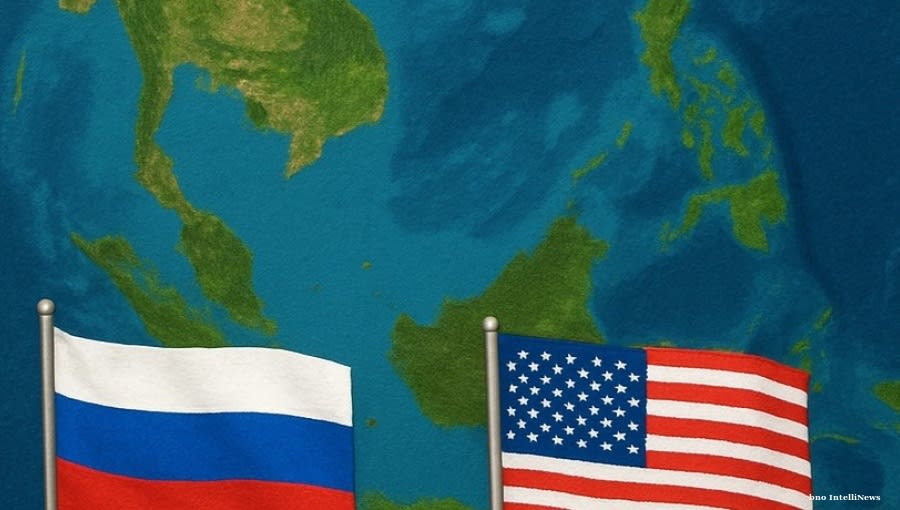COMMENT: Russia vs. America: The Battle for Influence in Southeast Asia
By bno - Taipei

Southeast Asia finds itself at the nexus of major-power rivalry, where the ambitions of international heavyweights such as the United States and Russia converge with the goals of energetic local stakeholders.
Even though both countries have been involved with the area in the past and still are today, they exhibit distinct differences in terms of their impact, authority, and enduring presence.
Between the two, Russia seems to be the declining power, whereas the United States, despite facing numerous obstacles of its own, maintains a wider, deeper, and more resilient presence in Southeast Asia.
The United States: key strategic support, long-standing ally
Since the end of World War II, the United States has kept a strong influence in Southeast Asia through various engagements including military actions, economic initiatives, and diplomatic efforts. During the Cold War period, U.S. policy was largely focused on preventing the expansion of communism—most prominently seen during the conflict in Vietnam. However, after the Cold War ended, the focus shifted towards supporting free markets, fostering democratic institutions, and strengthening alliances for regional security within the area.
Consequently, the current U.S. Indo-Pacific Strategy centers on Southeast Asia as a crucial element in its competition with China. Important alliances and partnerships, notably those with the Philippines, Thailand, Singapore, Vietnam, and Indonesia, help achieve American goals such as maintaining freedom of navigation, combating terrorism, and fostering economic growth.
Primarily, US involvement in the area is demonstrated through:
Even though there are increasing worries across the region regarding its political instability and periodic indications of strategic disunity—particularly following the re-election of the Trump administration—the United States continues to be a significant force because of the extent and reach of its involvement.
Russia’s involvement: strategic pragmatism constrained by boundaries
Russia’s involvement in Southeast Asia is considerably more limited, sporadic, and primarily responsive.
As it aims to assert itself as a rejuvenated major power on the global arena, Moscow's impact in Southeast Asia is inherently restricted by geographical distance, sparse economic connections, and an absence of reliable soft power.
In history, the Soviet Union maintained closer relationships with Vietnam and Laos during the Cold War era, providing substantial military aid as well as ideological support. Following the dissolution of the USSR, however, Russia pulled back significantly from this area through much of the 1990s. Under President Vladimir Putin’s administration, there have been instances where Russia made efforts to re-engage with Southeast Asia, primarily via weapons exports, diplomatic initiatives centered around energy resources, and aligning politically with non-democratic governments—but these advances have remained inconsistent over time.
Russia’s impact in the area is primarily marked by:
Is Moscow or Washington declining?
Although both Russia and the United States encounter difficulties in Southeast Asia, Russia is undoubtedly the entity experiencing a decrease in influence.
A significant part of this argument stems from economic influence—or the absence thereof. Southeast Asia represents a dynamic economy where commerce, investments, and technological exchanges hold great importance. The U.S. continues to be a key contributor of foreign direct investment and ranks among the leading trade partners for these countries. Conversely, Russia holds minimal economic relevance, providing primarily weapons and fossil fuels.
In terms of global strategic scope, Moscow also falls short. The U.S. maintains superior naval power in the Indo-Pacific region, supported by strategically positioned troops and robust partnerships, which allows Washington to significantly impact regional security conditions. In contrast, Russia does not have the necessary military facilities or logistics capability to maintain prolonged sway over the sea areas of Southeast Asia.
The institutional depth is also an aspect where the Russian state falls short compared to the U.S., since the U.S. interacts with ASEAN via various multilateral platforms such as the East Asia Summit, APEC, and the ASEAN Regional Forum. Although Russia does take part in certain of these forums, its involvement tends to be minimal and seldom influences the agenda.
And naturally, the major issue present in every conversation about Russia’s global relationships – the effect of the war in Ukraine – always looms large.
These developments have intensified Russia's diplomatic and economic isolation. Most countries in Southeast Asia have reacted with reserve or impartiality; however, this will likely lead to an increased perception of Russia as a outcast within Western-oriented frameworks, particularly concerning financial dealings, technological exchanges, and defense collaboration.
At the same time, as both the US and Russia interact with Southeast Asia partly to balance against China, only the US can offer a convincing alternative force. Russia’s increasing reliance on Beijing, especially after 2022, diminishes its image as a standalone player. Conversely, numerous ASEAN nations view the US as an essential check on Chinese dominance, notably in the South China Sea—further diminishing Russia’s standing.
There is one victor – and it isn’t Russia.
Considering everything mentioned previously, within the strategic assessment of Southeast Asia as of mid-2025, the U.S. continues to be a potent and multifaceted player. However, this role requires constant navigation through domestic political changes and international regional dynamics.
On the contrary, Russia faces restrictions due to its economic constraints, limited regional involvement, and heavy reliance on transactional diplomacy. Although Moscow retains the ability to engage tactically in sectors such as weapons exports or diplomatic maneuvers, it seems improbable for Russia to emerge as a leading or pivotal player in the evolution of Southeast Asia. The country’s sway continues to diminish both when measured against the U.S. and compared with increasingly regionally integrated forces like those of China, Japan, and India.
Russia missed the boat to Asia long ago. The US came into port to stay – and Southeast Asia’s geopolitical theatre continues to be shaped by the enduring presence of the United States. That will not change any time soon.
Belum ada Komentar untuk "COMMENT: Russia vs. America: The Battle for Influence in Southeast Asia"
Posting Komentar